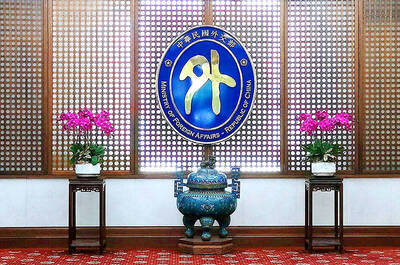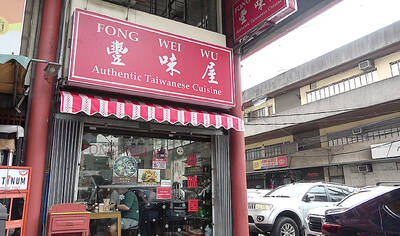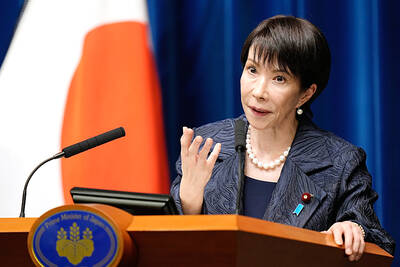The US has been more accommodating to Beijing under US President Barack Obama than his predecessors because Washington needs China more than China needs the US, an expert on China said.
Lin Chong-pin (林中斌), former Mainland Affairs Council vice chairman and a professor at Tamkang University’s Institute of International Affairs and Strategic Studies, said Obama’s more flexible attitude was reflected in his failure to mention human rights or freedom during his meeting with Chinese President Hu Jintao (胡錦濤) earlier this month.
While addressing students in Shanghai, Obama also failed to mention the Taiwan Relations Act, which regulates unofficial relations between the US and Taiwan and requires the US to sell defensive arms to Taiwan, Lin said.
“This shows that the United States wants more from China than vice versa,” he said, adding that the Obama-Hu meeting was a watershed in relations between the two countries.
A joint statement on the Obama-Hu meeting posted on the White House Web site, he said, included the word “cooperation” more than 40 times.
On issues ranging from Pakistan, North Korea, Iran’s nuclear weapon program and global warming, Washington needs assistance from China, but Beijing has nothing to ask from Washington, he said.
Tracing the evolution of the two countries’ strategic mindsets, Lin said Washington’s approach has gone from engagement to containment, engagement with containment and is now entering an era of “adjust and accommodate.”
This approach requires an adjustment on Washington’s part, with the belief that an emerging China is a positive force, Lin said.
This was why former US deputy secretary of state Robert Zoellick used the term “stakeholder” to describe US-China relations, he said.
Faced with the strategic shifts between the US and China, Lin said that if Taiwan tilts toward Washington, it will be unfavorable to Taiwan’s economy, but if it tilts toward Beijing, it will be unfavorable to Taiwan’s security.
Also See: Obama’s self-defeating Asia tour

The Ministry of Foreign Affairs (MOFA) yesterday voiced dissatisfaction with the Comprehensive and Progressive Agreement for Trans- Pacific Partnership (CPTPP), whose latest meeting, concluded earlier the same day, appeared not to address the country’s application. In a statement, MOFA said the CPTPP commission had "once again failed to fairly process Taiwan’s application," attributing the inaction to the bloc’s "succumbing to political pressure," without elaborating. Taiwan submitted its CPTPP application under the name "Separate Customs Territory of Taiwan, Penghu, Kinmen and Matsu" on Sept. 22, 2021 -- less than a week after China

THE GOOD WORD: More than 100 colleges on both sides of the Pacific will work together to bring students to Taiwan so they can learn Mandarin where it is spoken A total of 102 universities from Taiwan and the US are collaborating in a push to promote Taiwan as the first-choice place to learn Mandarin, with seven Mandarin learning centers stood up in the US to train and support teachers, the Foundation for International Cooperation in Higher Education of Taiwan (FICHET) said. At the annual convention of the American Council on the Teaching of Foreign Languages held over the weekend in New Orleans, Louisiana, a Taiwan Pavilion was jointly run by 17 representative teams from the FICHET, the Overseas Community Affairs Council, the Steering Committee for the Test of Proficiency-Huayu, the

A home-style restaurant opened by a Taiwanese woman in Quezon City in Metro Manila has been featured in the first-ever Michelin Guide honoring exceptional restaurants in the Philippines. The restaurant, Fong Wei Wu (豐味屋), was one of 74 eateries to receive a “Michelin Selected” honor in the guide, while one restaurant received two Michelin stars, eight received one star and 25 were awarded a “Bib Gourmand.” The guide, which was limited to restaurants in Metro Manila and Cebu, was published on Oct. 30. In an interview, Feng Wei Wu’s owner and chef, Linda, said that as a restaurateur in her 60s, receiving an

MORE RETALIATION: China would adopt a long-term pressure strategy to prevent other countries or future prime ministers following in Sanae Takaichi’s steps, an academic said Taiwan should maintain communications with Japan, as Japanese Prime Minister Sanae Takaichi is to lead a revision of security documents, Taiwanese academics said yesterday. Tensions have risen between Japan and China over remarks by Takaichi earlier this month that the use of force against Taiwan would constitute a “survival-threatening situation” for Japan. Prospect Foundation president Lai I-chung (賴怡忠) yesterday said Takaichi’s stance regarding Taiwan is the same as past Japanese prime ministers, but her position is clearer than that of her predecessors Fumio Kishida and Shigeru Ishiba. Although Japan views a “Taiwan contingency” as a “survival-threatening situation,” which would allow its military to